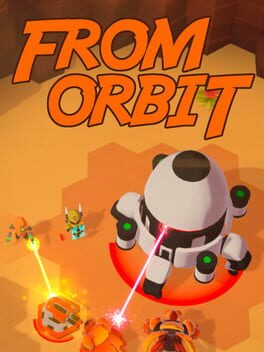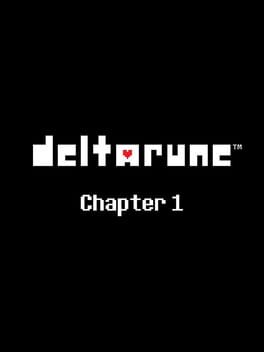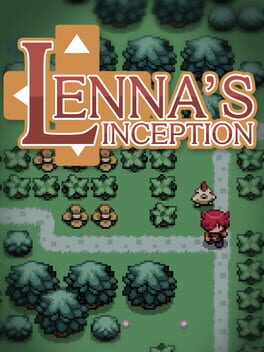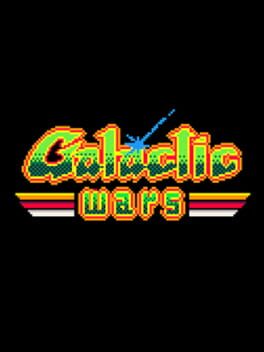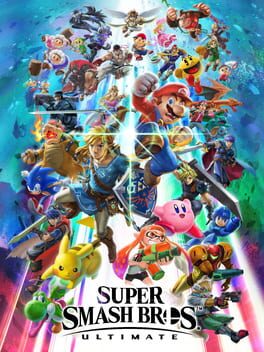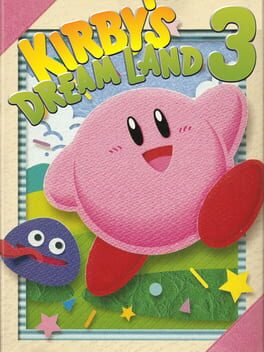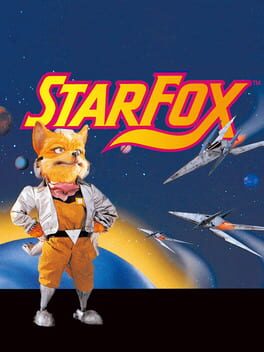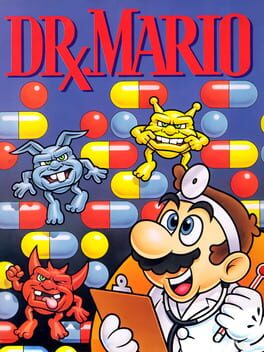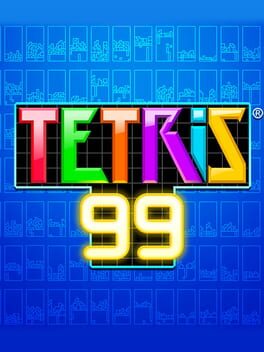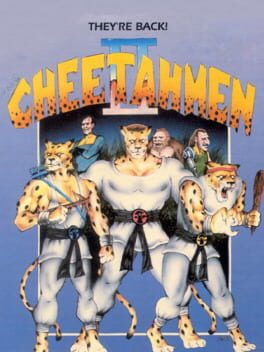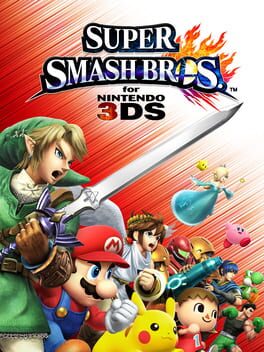mellorine
2019
I would also have liked to be able to attack, at least damage enemy spawners so that they don't spawn as much tough enemies so constantly - that, or more downtime between waves. Later stages end up having about five spawners with varying distances from your ship, so it means enemies keep coming from each of them with no time to breathe.
edit: backloggd wiped most of the review for some reason. i'll write a new one if i ever go back to this game
edit: backloggd wiped most of the review for some reason. i'll write a new one if i ever go back to this game
2018
2020
Lenna's Inception is a little hard for me to sum my feelings up about, because it feels like it wants to be too many things at once, at the detriment of the sum of its parts.
On one hand, it's an excellent Zelda-like with its own twists: it recontextualizes Zelda traditions like the trading quest and incorporates some charming, Undertale-esque pacifist themes to its narrative. Uncovering the lore of the game and seeing the main characters develop (to an extent; there isn't that much storytelling in the game at the end of the day) is a joy, as is the witty writing.
On the other hand, Lenna's Inception wants to be a procedurally generated game that appeals to the randomizer speedrunning community, with constant randomized seeds and speedrunner-friendly modes to cater to it. I think I understand where the developers are coming from with it, especially given that the game makes a decent amount of references to the sort of metagame exploits common in glitched speedrunning, but for someone comparatively distant from the scene, it drags down the rest of the game with it for me.
The fact that all the seeds are procedural means that someone's first experience with the game world will be nowhere near as elegantly and organically designed as Link's Awakening - one of Lenna's Inception's closest Zelda relatives alongside the original game.
While rare, it is allegedly also possible to find yourself in an unwinnable seed, or at least one that requires understanding of the game's less explained mechanics to proceed, which is something I doubt people will think of trying on a first run.
The same goes for the dungeons and various hidden mini-dungeons: they follow a roughly LA-esque "run into blocked areas until you find the dungeon item that lets you access those areas" kind of dungeon design, but are - mechanically and in design - about as shallow of the earliest dungeons of the original Legend of Zelda.
Depending on what you plan on accomplishing with your playthrough, the dungeons end up becoming a formality; something doesn't have much of a reason to exist.
The game allows you to skip dungeon bosses if you like, but locks most of the narrative behind confrontations with the bosses - meaning that if you decided to skip some, especially the later bosses, you end up missing out on much of the game's actual plot, which also results in a confused non-ending that doesn't even begin to hint at the charm that the full story has.
Finally, a handful of items - some plot-mandatory, and some debug tools that are available to acquire in the game world - just end up breaking the entire point of exploring the overworld and dungeons. The former plot-mandatory item is actually necessary to proceed in various parts of the game, meaning that there is no choice to not use it once it's acquired; even it alone can trivialize exploration, but when both are combined, there really is no point in playing the game "normally" in my opinion.
I feel like maybe these two distinct sides to Lenna's Inception would have been better off left as their own games, where each half could have been developed further than they currently are.
As it is, however, the dissonance between the game's ideas leave me incapable of rating this game alongside its two aforementioned Zelda cousins.
I'd love to see the developers pick a side for their next game, if it ends up being anything like this in its ideas. I can't say I'd be into it if they commit to the randomized speedrun approach, but I'd even rather see that than another game that struggles at cohesion.
On one hand, it's an excellent Zelda-like with its own twists: it recontextualizes Zelda traditions like the trading quest and incorporates some charming, Undertale-esque pacifist themes to its narrative. Uncovering the lore of the game and seeing the main characters develop (to an extent; there isn't that much storytelling in the game at the end of the day) is a joy, as is the witty writing.
On the other hand, Lenna's Inception wants to be a procedurally generated game that appeals to the randomizer speedrunning community, with constant randomized seeds and speedrunner-friendly modes to cater to it. I think I understand where the developers are coming from with it, especially given that the game makes a decent amount of references to the sort of metagame exploits common in glitched speedrunning, but for someone comparatively distant from the scene, it drags down the rest of the game with it for me.
The fact that all the seeds are procedural means that someone's first experience with the game world will be nowhere near as elegantly and organically designed as Link's Awakening - one of Lenna's Inception's closest Zelda relatives alongside the original game.
While rare, it is allegedly also possible to find yourself in an unwinnable seed, or at least one that requires understanding of the game's less explained mechanics to proceed, which is something I doubt people will think of trying on a first run.
The same goes for the dungeons and various hidden mini-dungeons: they follow a roughly LA-esque "run into blocked areas until you find the dungeon item that lets you access those areas" kind of dungeon design, but are - mechanically and in design - about as shallow of the earliest dungeons of the original Legend of Zelda.
Depending on what you plan on accomplishing with your playthrough, the dungeons end up becoming a formality; something doesn't have much of a reason to exist.
The game allows you to skip dungeon bosses if you like, but locks most of the narrative behind confrontations with the bosses - meaning that if you decided to skip some, especially the later bosses, you end up missing out on much of the game's actual plot, which also results in a confused non-ending that doesn't even begin to hint at the charm that the full story has.
Finally, a handful of items - some plot-mandatory, and some debug tools that are available to acquire in the game world - just end up breaking the entire point of exploring the overworld and dungeons. The former plot-mandatory item is actually necessary to proceed in various parts of the game, meaning that there is no choice to not use it once it's acquired; even it alone can trivialize exploration, but when both are combined, there really is no point in playing the game "normally" in my opinion.
I feel like maybe these two distinct sides to Lenna's Inception would have been better off left as their own games, where each half could have been developed further than they currently are.
As it is, however, the dissonance between the game's ideas leave me incapable of rating this game alongside its two aforementioned Zelda cousins.
I'd love to see the developers pick a side for their next game, if it ends up being anything like this in its ideas. I can't say I'd be into it if they commit to the randomized speedrun approach, but I'd even rather see that than another game that struggles at cohesion.
1995
2017
It's a horizontal shmup made in Pico-8 that feels mainly inspired by Galaxian's waves and steadily approaching enemies, but feels like it does those things in its own way. I like it quite a bit, but maybe I'm just not familiar with the history of shmups enough to have a refined opinion - and it's admittedly a little too hard and mechanically rigid to spend too much time on.
1997
I like games that feel fun to move around in, usually. There's a reason why Super Mario 64 and Odyssey are some of my favorite games of all time; why I have a small soft spot for racing games; and I can't often stand turn-based RPGs for too long.
Kirby's Dream Land 3 gets so many things right... but movement is not one of them.
It's a fun game to look at, but not so much to play. Kirby's air momentum when jumping is instantly halted when he puffs up, and his float speed is roughly as slow and aggravating as his walking speed is.
The camera often takes time to catch up when Kirby starts running, resulting in Kirby running to the right side of the screen and being more prone to getting blind-sided from enemies.
At least half of Kirby's animal buddies' default movement are not fun (Kine, Pitch, Chuchu), to add insult to injury.
It's a shame, because this is one of the Kirby games with the best, most unique art, Jun Ishikawa near his absolute compositional prime, and this almost melancholic undertone that really sells this game - and its entire trilogy - in terms of atmosphere, and makes its overarching antagonist easily one of the franchise's most interesting ones.
But it's just not as pure fun to play as Super Star or the Kumazaki-directed modern Kirby games. The missions within each stage are poorly explained, even if once you understand their general structure; the minigames get almost impossible without save states, and the boss rush is one of the series' worsts.
But it's really, really pretty. This game gives me mixed messages.
Kirby's Dream Land 3 gets so many things right... but movement is not one of them.
It's a fun game to look at, but not so much to play. Kirby's air momentum when jumping is instantly halted when he puffs up, and his float speed is roughly as slow and aggravating as his walking speed is.
The camera often takes time to catch up when Kirby starts running, resulting in Kirby running to the right side of the screen and being more prone to getting blind-sided from enemies.
At least half of Kirby's animal buddies' default movement are not fun (Kine, Pitch, Chuchu), to add insult to injury.
It's a shame, because this is one of the Kirby games with the best, most unique art, Jun Ishikawa near his absolute compositional prime, and this almost melancholic undertone that really sells this game - and its entire trilogy - in terms of atmosphere, and makes its overarching antagonist easily one of the franchise's most interesting ones.
But it's just not as pure fun to play as Super Star or the Kumazaki-directed modern Kirby games. The missions within each stage are poorly explained, even if once you understand their general structure; the minigames get almost impossible without save states, and the boss rush is one of the series' worsts.
But it's really, really pretty. This game gives me mixed messages.
1993
1990
2019
i really wanted to like this game. the versus mode is easily so much more exciting and competitive than regular dr. mario versus ever was
but between gatcha and the candy crush heart system, it's suffocating. i wish i could have just paid a flat fee for it... though in that case i'd rather have had this on switch instead.
but between gatcha and the candy crush heart system, it's suffocating. i wish i could have just paid a flat fee for it... though in that case i'd rather have had this on switch instead.
2019
TBD
I used to play MapleStory as a kid because all the older kids were really into it.
I accidentally warped to Leafre, was too underleveled, barely paid my way back to Orbis and dropped the game when I couldn't hunt monsters there to buy a ticket back to Victoria Island either.
This kind of vindicates that childhood, in a way. I don't think I'd want to try official MapleStory these days, given how much the game has apparently changed (MapleStory is one of those games that I don't think ever needed the amount of lore it has now), and this is an okay way to just take its old world in, with all the nostalgic music, locations and everything. I really liked actually getting to style my character too!
But Maple gameplay is too dependent on grinding, (party) quests and plain unsatisfying gameplay loops. I think the amount of metagaming and optimal strategies that have come out of it are a testament to how tedious it is as a casual player.
That's why my favorite thing to do in the game was to just travel and explore, without caring too much about enemy levels; Dark Sight is easily the one most fun skill in the entire game, letting you sightsee past dangerous monsters usually without taking damage from them.
But that can last so long before you have to start leveling up again; to return to the grind, the tedium that not even Royals' fairly warm and welcoming community couldn't ultimately help.
Maybe it's a game for other people, but I don't think it's for me.
I accidentally warped to Leafre, was too underleveled, barely paid my way back to Orbis and dropped the game when I couldn't hunt monsters there to buy a ticket back to Victoria Island either.
This kind of vindicates that childhood, in a way. I don't think I'd want to try official MapleStory these days, given how much the game has apparently changed (MapleStory is one of those games that I don't think ever needed the amount of lore it has now), and this is an okay way to just take its old world in, with all the nostalgic music, locations and everything. I really liked actually getting to style my character too!
But Maple gameplay is too dependent on grinding, (party) quests and plain unsatisfying gameplay loops. I think the amount of metagaming and optimal strategies that have come out of it are a testament to how tedious it is as a casual player.
That's why my favorite thing to do in the game was to just travel and explore, without caring too much about enemy levels; Dark Sight is easily the one most fun skill in the entire game, letting you sightsee past dangerous monsters usually without taking damage from them.
But that can last so long before you have to start leveling up again; to return to the grind, the tedium that not even Royals' fairly warm and welcoming community couldn't ultimately help.
Maybe it's a game for other people, but I don't think it's for me.
TBD
1990
Super Mario World is a fairly obsolete platformer in 2020, I think. The New Super Mario Bros. games and 3D Land/World have had the advantage of getting to spend more time polishing the art of level design, almost down to a science - and the adventuring and worldbuilding aspect of Dinosaur Land lives on in games like Rabi-Ribi, I think.
But despite that, it's still fun to go back to. I don't know why, but there's a je ne sais quoi to it that still lets it stand on its own, even thirty years (wow!) after its release.
If Super Mario Bros. 1 is a streamlined, single-sitting platformer, and Super Mario Bros. 3 is a game with shorter levels that often get to the synthesis part of the modern four-step level design philosophy...
I think Super Mario World is a game that stands strong by being more than just the sum of its parts.
But despite that, it's still fun to go back to. I don't know why, but there's a je ne sais quoi to it that still lets it stand on its own, even thirty years (wow!) after its release.
If Super Mario Bros. 1 is a streamlined, single-sitting platformer, and Super Mario Bros. 3 is a game with shorter levels that often get to the synthesis part of the modern four-step level design philosophy...
I think Super Mario World is a game that stands strong by being more than just the sum of its parts.
Smash Run was so fun! I loved picking the game up every once in a while to just jump into the mode and see how overpowered I could get my characters. It really helps that between it and character customization, everyone could hypothetically become fun, fast bruisers with decent mobility.
PAC-MAN is one of my favorite characters to be added to the series, and I really enjoyed having a game where I could play as him, Kirby and so many other characters.
I suppose Ultimate probably obsoletes it these days, but I don't think I'll ever forget the days of hanging out in my boyfriend's dorm, casually playing Smash Run while watching him play something else.
PAC-MAN is one of my favorite characters to be added to the series, and I really enjoyed having a game where I could play as him, Kirby and so many other characters.
I suppose Ultimate probably obsoletes it these days, but I don't think I'll ever forget the days of hanging out in my boyfriend's dorm, casually playing Smash Run while watching him play something else.
